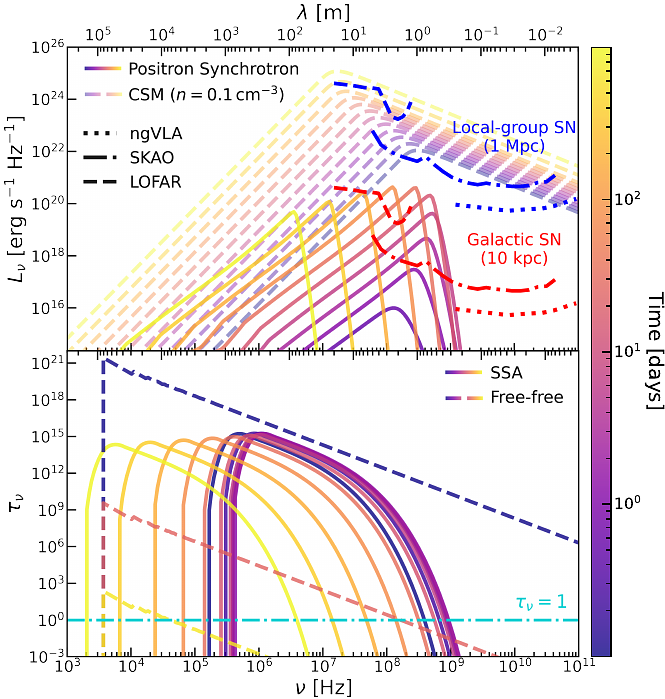Plasma Instabilities Dominate Radioactive Transients Magnetic Fields: The self-confinement of leptons in Type Ia and Core-Collapse Supernovae, and Kilonovae

Plasma Instabilities Dominate Radioactive Transients Magnetic Fields: The self-confinement of leptons in Type Ia and Core-Collapse Supernovae, and Kilonovae
Dhvanil D. Desai, Colby C. Haggerty, Benjamin J. Shappee, Michael A. Tucker, Zachary Davis, Chris Ashall, Laura Chomiuk, Keyan Gootkin, Damiano Caprioli, Antoine Bret, Hayk Hakobyan
AbstractThe light curves of radioactive transients, such as supernovae and kilonovae, are powered by the decay of radioisotopes, which release high-energy leptons through $\beta^+$ and $\beta^-$ decays. These leptons deposit energy into the expanding ejecta. As the ejecta density decreases during expansion, the plasma becomes collisionless, with particle motion governed by electromagnetic forces. In such environments, strong or turbulent magnetic fields are thought to confine particles, though the origin of these fields and the confinement mechanism have remained unclear. Using fully kinetic particle-in-cell (PIC) simulations, we demonstrate that plasma instabilities can naturally confine high-energy leptons. These leptons generate magnetic fields through plasma streaming instabilities, even in the absence of pre-existing fields. The self-generated magnetic fields slow lepton diffusion, enabling confinement and transferring energy to thermal electrons and ions. Our results naturally explain the positron trapping inferred from late-time observations of thermonuclear and core-collapse supernovae. Furthermore, they suggest potential implications for electron dynamics in the ejecta of kilonovae. We also estimate synchrotron radio luminosities from positrons for Type Ia supernovae and find that such emission could only be detectable with next-generation radio observatories from a Galactic or local-group supernova in an environment without any circumstellar material.